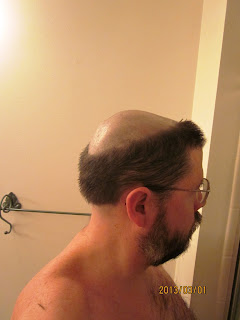I have been tasked with doing the illumination for this year's Archery Champions Scroll. I don't much care for nor like the quality of my Calligraphy so when the illumination is completed I will hand off the scroll to another friend who will finish it up. I searched a long time across many time periods for illuminated manuscripts which depicted archers in action. I debated long with myself as to the image I should select. Ultimately I went with the following page as my inspiration:
Illuminated Manuscript, Book of Hours, St. Sebastian, Walters Manuscript W.168, fol. 215v
This fine illuminated Book of Hours was produced in two stages in the second and third quarters of the fifteenth century. The manuscript contains eleven full-page miniatures and twenty historiated initials. The first stage of production includes a section attributed to the Masters of Zweder van Culemborg and the calendar (fols. 3r-14v, 52v-211v), while additional prayers illustrated in the style of the workshop of Willem Vrelant were added later in the fifteenth century (fols. 16r-50v, 213r-223r), presumably when the book was bound in its present binding. The Hours of the Virgin is for the Use of Rome. The Use of the Office of the Dead is unidentified, but the calendar is for the Use of Utrecht. The two separate parts of the manuscript were bound together in Flanders. The sections of W.168 attributed to the Masters of Zweder van Culemborg have been compared to Utrecht, Utrecht University Ms. 1037; Cambridge, Fitzwilliam Museum James Ms. 141; the second hand in New York, Pierpont Morgan Library Ms. M.87; Stockholm, Royal Library A 226, and Philadelphia, Free Library Lewis Ms. 88.
At first I thought about replacing the image of the martyred Saint Sebastian with a target, but I thought on it and decided to simply make the image appear as close to the original as possible. While we in the SCA reenact and pretend to play warrior I rather think it important to know that the skill we practice was once actually used to commit killings like those depicted. I hope that the archer who receives the scroll is not only happy with the quality of the workmanship and but can appreciate the historical image and understand the that the skill they now practice was once used for horrendous tasks.
To get things started I sketched out the image on 11x14 Pergamenata. The image was sketched with a mechanical pencil.
Normally I would use a metal tipped dip pen do do all the ink-work but this time I tried out a new fountain pend that I purchased. The resulting quality looks much like the original depicted and saved some time since I didn't have to dip the pen 200 times while inking in the outlines.
Here are some progress photos. I printed out a copy of the original on my color printer and used that as a side by side reference. The gold work is Holbein Gold Gouache. The rest of the color applied is Reeve's Gouache paint purchased from Michaels.
Close up of the detail work. I've never done this sort of imagery on a scroll. The closest thing like this that I have done before was a "period" inspired painting for my game board based on the period painting of the seven deadly sins. That painting (still not completed) was done in acrylics though. This is the first time I tried painting an image like this with gouache. Sort of a trial by fire. I started by laying down layers of paint which would serve as the background color. This also helped me space out the image. I wanted to cover my light pencil sketch lines as well.
As the detail work gets added I imagine that the image in the middle of the illuminated letter will take about 75~80% of the total time spent creating the scroll. I plan on doing the white work at the very end. That sort of work I've done a little of before and I have less concern about that. I want to finish the image in the middle as I have only 5 more days before I have to hand this off to the calligrapher.

Decided to take a break from the Saint Sebastian painting and finish up some of the detail work around the border. Added some highlights on the flowers. I really like this style border and may use it again, without the Saint Sebastian in the middle.
























































